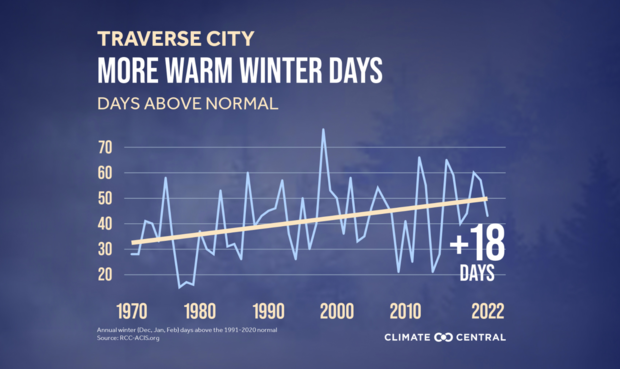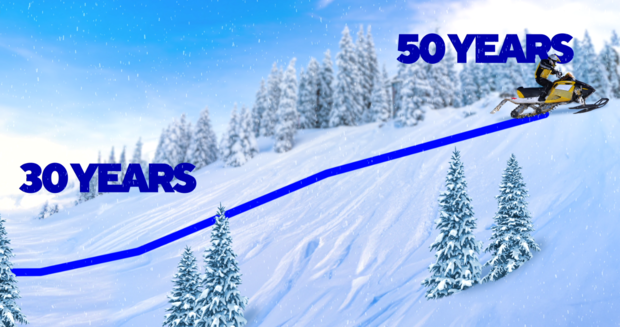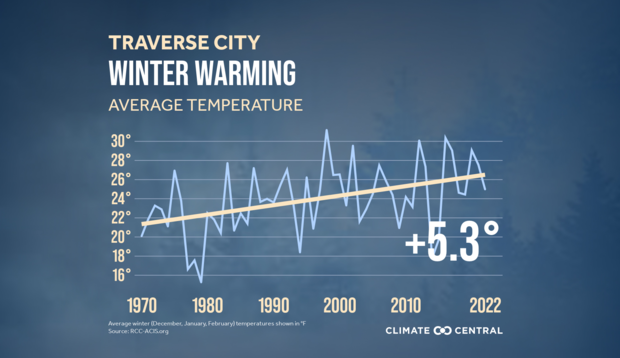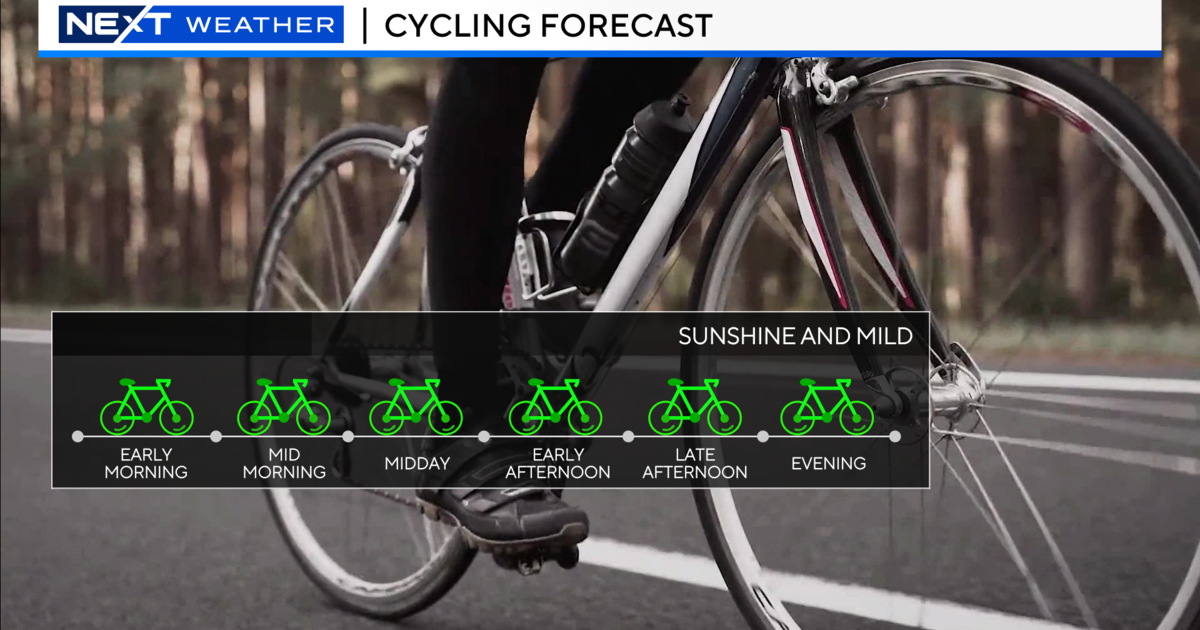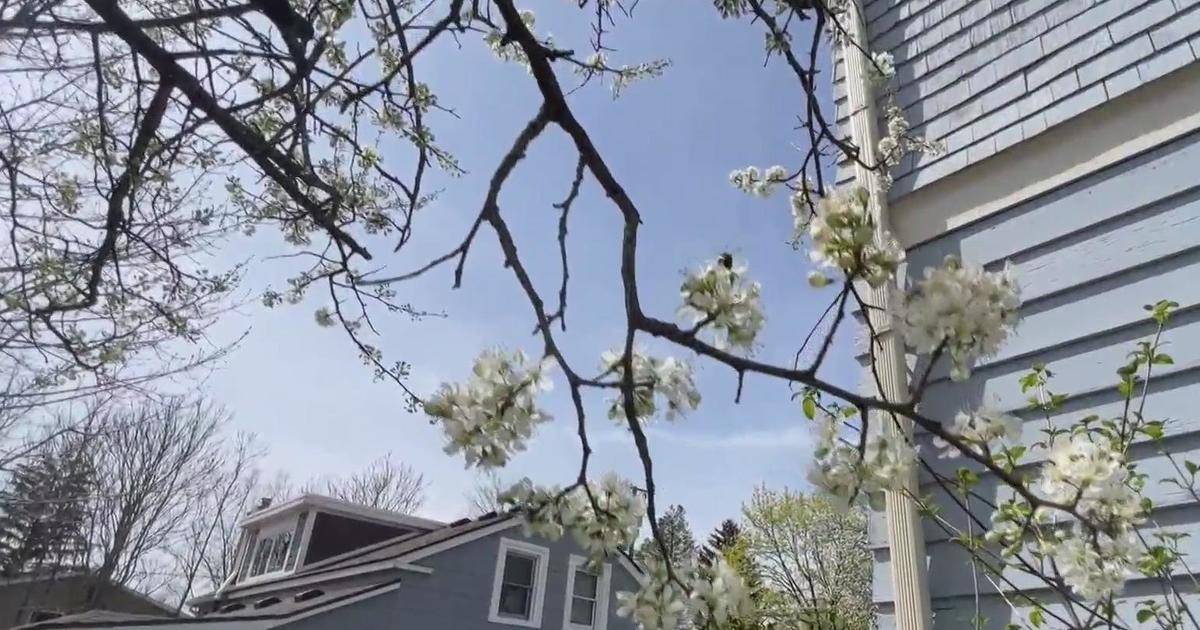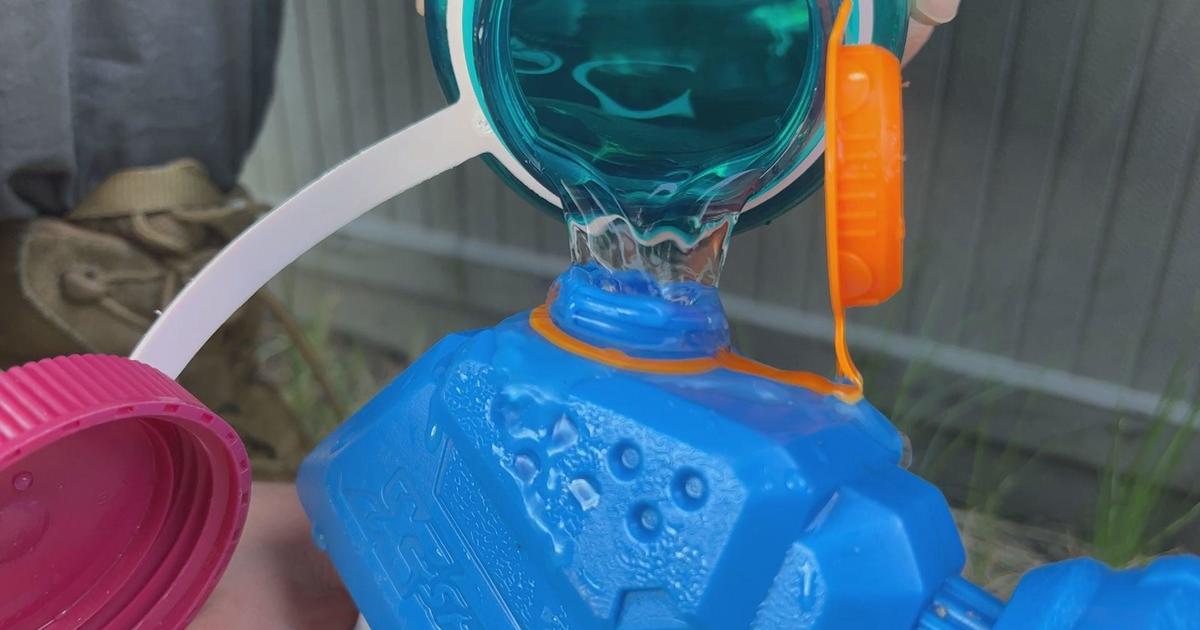On The Dot: Warming Michigan winters and snowmobile tourism
(CBS DETROIT) - "The last three winters at least have been really brutal," says Chase Pawlanta.
"It's warmer days throughout the dead of winter that can ruin the conditions for snowmobilers," says Scott Meterko.
Pawlanta and Meterko are two different sides of the same snowy coin.
Both love to snowmobile and have all their lives, but both also own businesses in Michigan that are seeing a trend in the wrong direction regarding snowmobiling in the northern mitten.
"I remember riding down here. In the lower peninsula, the snow was gnarly. We got 36 inches in two days. But then within five days, we had grass again, like it literally was 55 and rainy," says Pawlanta. "So, like, that's what we're having. This is huge for ups and downs of temperature, in which we're getting the snow and losing the snow. So it's really a bummer."
Pawlanta owns the Frederic Inn, a well-known stop for anyone riding the trails between Grayling and Gaylord. He grew up there and says he can see the difference year to year with how even a slightly milder winter can drastically affect businesses that rely on snowy tourism.
"Snowfall and temperature literally define how our business is during the winter," he says.
The northern part of the mitten, the northwest snow belts, are a well-known area to visit for those in southern parts of the state if they don't want to make a day-long trip in the upper peninsula. But it all depends on the snow.
"If not, you're going up the U.P., which is what I have to do, which is like it's a bummer for us locals, too. It's like I grew up my whole life riding out of the house, riding anywhere I needed," Pawlanta says. "It's a lot cheaper than loading up the truck, loading up the trailer, adding another 2 hours from here to Paradise or Munising or even farther up at the top of Copper Harbor."
And it isn't just a trip farther north.
Meterko owns Bright Powersports in Lincoln Park.
While researching for this story, we called seven different power sports dealers. One of them was Rosenau in Dearborn, which directed us to Meterko, who was the only one still selling snowmobiles.
Meterko says he is seeing a change in the time of year for snowmobiling both as a business owner, and a rider.
"So it's the last decade or so, it's been a little bit more of a struggle with the weather because what we start to see is we start to see a lot of this mid-winter warm up where, you know, in January and February you get these, you know, upper forties and fifties every day," he says "... one of those days can entirely wipe out a week or two worth of snow in bass and you know, setting the trails up."
Meterko says that while the sport most definitely still exists, there's a worrying change happening that was slow at first and has picked up steam as the winters have warmed up north.
"The demographic itself has changed dramatically," he says.
He says the demographic of those buying snowmobiles has shifted from those in their 30s to those well into their 50s. He says those riders have the free time or funds to take the long trips farther north where a good snow base exists in the winter.
Yamaha is also seeing this change. They announced that model year 2025 will be their last in the snowmobiling business internationally.
"There's no doubt that the winters have gotten warmer over the last several decades. Not a surprise to anybody who's lived up here for any length of time," says Jim Keysor, meteorologist in charge at Gaylord's National Weather Service office.
He says that the milder setups cause a lack of the required snowpack for snowmobiles later into the winter than we saw 20 years ago.
"And what we're seeing sort of more of a backloaded winter, I guess, is how I describe it. You know, January, February, March, are better," Keysor says.
"November, December, not as good. So certainly, an economic impact on that side."
But this is key, that doesn't mean there isn't any snow, or even that snowfall is below average.
"Maybe surprising to people, we receive almost the same amount of snow that we've received really, looking back the last 50 or 75 years, the amount of snow has not really changed all that much," Keysor says.
"It may feel like it's changed. What has changed, though, is that we're melting more in between the snow events. We're seeing more thaws and more rain events in between. And it feels like we're sort of on this the seesaw."
The heavy hits of snowfall are a documented sign of warming conditions. It may also be easier to melt because the physical make-up of the snow is more of that wet and heavy type of snowfall. Difficult to move, but faster to melt. This is something actively being researched.
"It's interesting you mentioned that we're actually partnering with the University of Michigan right now on a snow study on exactly that topic," Keysor says. "And they've got some equipment here in our office, which we're looking at sort of the density of snow that's falling and that's only a couple of years old."
He also says a big focus is on warmer winters allowing Lake Effect snow to continue to ramp up.
"The lake effect machine actually goes in a very robust fashion. So, a little bit warmer weather, a little warmer winter does not shut off necessarily. So that is probably one reason why the Great Lakes is one of the only places in the entire country that has actually seen increases or at least steady to an increase in the amount of winter snowfall in almost anywhere in the lower 48."
Saying the words climate change or talking about how there are signs of things changing brings a robust debate. On that part, Keysor gives a little background specifically for northern Michigan.
"This is not this is not a linear thing. And the climate always changes. So let's just put a fact on the table ... Can we all agree that if I look through history, climate changes, it does," he says.
"And we know that we know that from ice cores samples. We know that from tree rings, we know that from a lot of different things. We know that. That is weather and it's why I got into weather, because it's changing and volatile and extreme. That's weather. Do I think humans influence it? In all likelihood, to some degree, yes. The bottom line is warmer winter weather is displaying a track record."
This is affecting snowmobile conditions in the northern mitten leading many who used to frequent Grayling, Gaylord, Frederic, and Kalkaska to head north of the bridge seeking the perfect powder.
"For the better part of a couple of decades, you could count on December through March being your riding season, we've essentially lost December. If we lose another month, then that could be an issue," says Meterko.
"If we have great snow, we are busy. I mean, we're as busy as the Fourth of July weekend. If we don't get access," Pawlanta says.
"You're going to keep going up north until you find it."
While Yamaha is the first to get out of snowmobile sales, it's important to note they were the lowest provider in terms of recognized snowmobile sales. The next on the list is Arctic Cat, which both Chase and Scott believe only has a few years left as well unless they can keep up with the offerings provided by companies like Ski-doo and Polaris.
